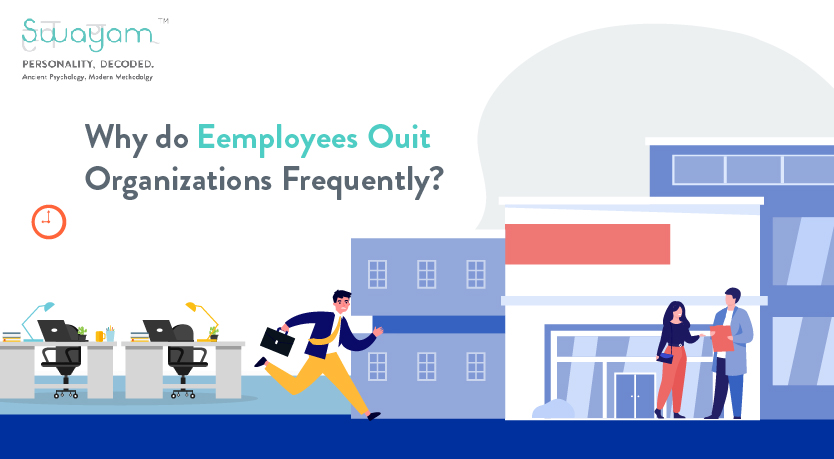
This decade has seen more employees willingly leaving their jobs. Loss of valued employees makes their managers emotionally drained and is an acute loss for the organisation. Such setbacks serve as an opportunity for organisations to take time and reflect on the problem.
However, the short time in hand and the need for damage control prevents HR professionals from finding the root cause of such voluntary resignations among employees and understanding what corrective measures need to be taken to stop such incidents from repeating shortly.
Many organisations have an exit interview process to get insights to improve employee retention. But these interviews are ineffective and have serious shortcomings. Sometimes employees quit their organisations before any interview has even been conducted and even if they do, most of them are not honest. The employees are not candid in such interviews because they feel that their feedback won’t be taken seriously. After all, the organisation is unwilling to change.
In some cases, they refrain from telling the truth because they want to leave with a positive impression. Such shortcomings of the interviews do not let management know the truth.
Some reasons for which employees leave organisations
•Work-life imbalance – In case the work pressure makes it necessary for the employee to choose between personal and professional life, there is a chance that they may take a step back.
•Unavailability of growth opportunities – In case there are no opportunities for future advancement in the current organisation, employees choose another firm in hope of better status and working conditions.
•Job expectations – Sometimes the initial job descriptions are different from the actual work which make employees frustrated in the long run and finally leave their position in the organisation.
Keep track on how employees resign
The way an employee resigns is a reflection of how they were treated in the organisation. Keeping track of how its employees resign helps HR professionals understand the working condition inside the firm and in case there is a bridge-burning or impulsive quitting, the managers can look into the matter and find the real cause behind their departures. This helps create a healthy working environment by transforming the discomfort of employee turnover into progress.
How to turn employee resignations into a source of organisational improvement?
•In cases where employees who have resigned refrain from telling the true reasons behind their departure, their co-workers can give the organisation an insight. Having a candid conversation with the peers who were close to the employee can help them know the motives behind their departure and help the organisation focus on the causes so that such incidents do not repeat. Although it may seem like a violation of someone’s privacy, such conversations in the long run help to improve the experience of the remaining workforce and give room for employees to share their thoughts and opinions who are facing similar problems and discomforts. This creates healthy working relationships where managers and employees discuss the working conditions without any fear of being judged.
•Examining and keeping a track of their employees after they leave the organisation, helps to understand the real reason behind their resignation. The reason may vary from having a healthier work-life balance to choosing a particular rival over the organisation. Identifying the reasons help them design an environment that caters to the needs of its employees and this eventually helps them from losing human capital
•The HR professionals and managers can use the evidence-based approach to identify the root cause of the loss and get valuable information about the working condition of their organisations. When an employee resigns instead of trying to cope up with the human capital loss and disruption, trying to focus on the reason behind their departure and taking time to reflect on the problem will help managers improve their organisations.

